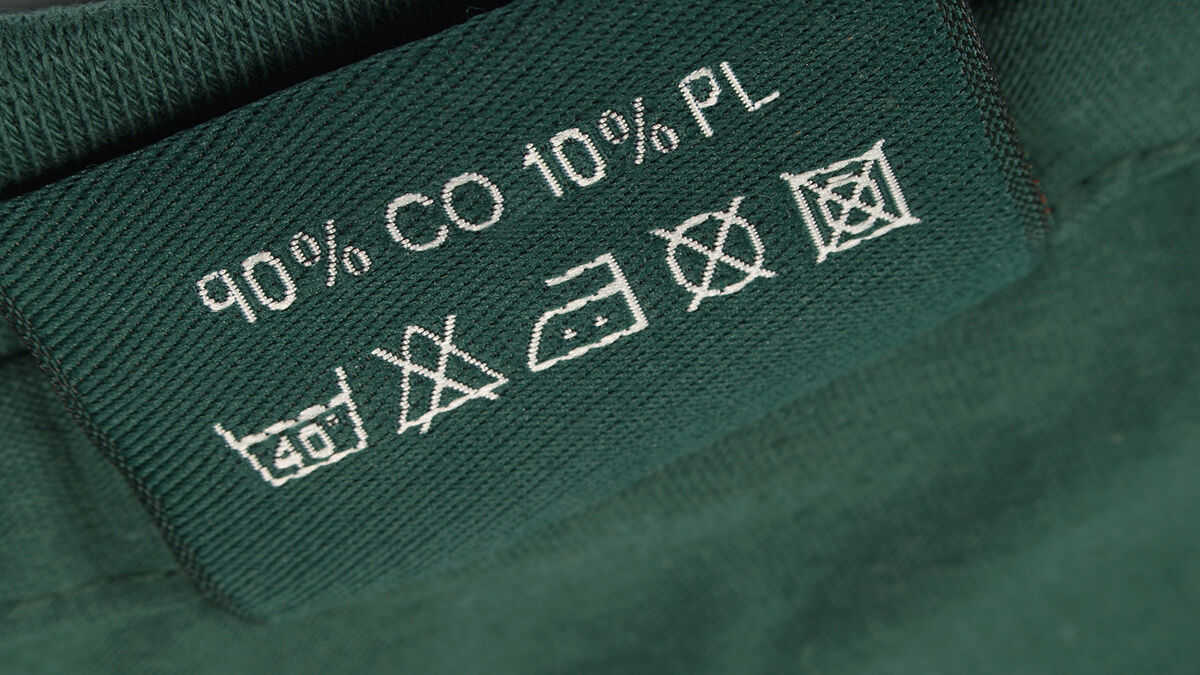
Understanding common fabric abbreviations can give you important information about the fiber content of the textiles you use. Textile abbreviations, just like crochet abbreviations and knitting abbreviations, are an important part of understanding how to use fibers to make things. From reading labels to working on sewing or decorating projects, this exhaustive list of fabric abbreviations will come in handy. You can brush up on laundry symbols too!
Fabric Abbreviations for Natural Fibers
Natural fibers are any type of fabric or textile that comes from nature. This can include plant fibers like cotton and animal fibers like wool. If you see one of these abbreviations, you’ll know what it means:
- CO - Cotton, a natural fiber derived from the cotton plant
- HA - Hemp, a strong natural fiber from the outer portion of the hemp plant’s stalk
- HS - Horsehair, a fiber made from the tails and manes of horses
- JU - Jute, a course vegetable fiber made from tall tropical plants
- LE - Leather, a fabric made of animal skin
- LI - Linen, a natural textile made from flax
- RA - Ramie, a strong fiber made from a flowering plant
- SE - Silk, a natural fiber produced by insect larvae
- SI - Sisal, a strong fiber from a Mexican plant
- WA - Angora, a natural textile made from the wool of the Angora rabbit
- WB - Beaver fur, fur or textiles made from the hair of beavers
- WK - Camel hair, textiles made from the hair of camels
- WL - Llama hair, textiles made from the hair of llamas
- WM - Mohair, a type of wool made from the hair of the Angora goat
- WO - Wool or recycled wool, a textile made from sheep’s wool
- WP - Alpaca wool, a textile made from the wool of alpacas
- WS - Cashmere, a type of wool from the Cashmere goat
- WV - Virgin wool, wool from a lamb or wool that has not been recycled
- WY - Yak, wool from a yak
Fabric Abbreviations for Synthetic and Artificial Fibers
Man-made fibers can be those completely created in the lab or they can be textiles created using artificial methods. Sometimes, they are made from natural materials, but calling them natural fibers is false advertising. They have been heavily processed to take the qualities desired in a particular textile. Whether they start in nature or in the lab, it’s helpful to know their abbreviations:
- AC or CA - Acetate, a fabric made by refining and spinning wood pulp
- BB - Bamboo viscose, a type of viscose fabric made from bamboo pulp
- CLY - Lyocell, a type of fabric made using dissolved wood pulp
- CMD or MD - Modal, a very soft fiber derived from beech trees
- CU or CUP - Cupro, a fabric made from cotton waste
- EA or EL - Elastane (also called Lycra or Spandex), made from polyether-polyurea copolymer
- ME - Metallic fiber, any fabric with metals added
- NY - Nylon, a thermoplastic material that is processed with heat
- PA - Polyamide, a synthetic fiber made from polyamides
- PAN - Polyacrylic, a synthetic wool-like fabric made from acrylonitrile
- PL or PES - Polyester, the shortened name of a synthetic polymer used in many textile blends
- PU - Polyurethane, a waterproof fabric that is made by laminating other fibers, including polyester
- TA - Triacetate, a stretchy fabric mostly made from highly processed plant fibers
- VI or CV - Viscose, a fabric made from processed wood pulp
- VY - Vinyl, a textile made from natural gas and chlorine
Fabric Abbreviations for Blends and Qualities
Some textiles are a blend of multiple fibers. The following abbreviations refer to fabric blends:
- AF - Other fibers, other fibers not specified
- FI - Flax/linen blend, a blend of linen and flax
- HL - Linen/cotton blend, a blend of cotton and linen
- MA - Modacrylic, a blend with between 35% and 85% acrylonitrile
- NW - Nonwoven, a fabric made by a process other than weaving
- OM - Organic material, a textile made from organic materials
- SM - Synthetic materials, any textile made from man-made materials
Textile Abbreviations for Use and Durability
If you’re in the decorating trade or need to understand the labels on decorative fabrics, you’ll find this is another way manufacturers use abbreviations. These use abbreviations can offer important information about the durability of various textiles in the form of “rubs.”
A “rub” is a back-and-forth movement of a mechanical arm pushing a piece of cotton duck fabric against the tested fabric until the fibers of the tested fabric start to break. You may see the following abbreviations referring to durability or “rubs”:
- DD - Decorative domestic, a light use fabric designed to handle 5,000 to 9,999 rubs
- LD - Light domestic, a lightweight domestic fabric designed for 10,000 to 14,999 rubs
- GD - General domestic, a mid-weight fabric for domestic use designed for 15,000 to 24,999 rubs
- HD - Heavy domestic, a heavy-weight domestic use fabric designed for 25,000 to 39,999 rubs
- GC - General contract, a heavy professional fabric designed for 40,000 to 49,999 rubs
- HC - Heavy contract, a very heavy professional fabric designed for more than 60,000 rubs
Important to Understand
The fiber content and usage guidelines for various textiles are important to understand, no matter how you plan to use the materials. From fashion to home decor, you’ll find these common abbreviations on labels and fabric descriptions.